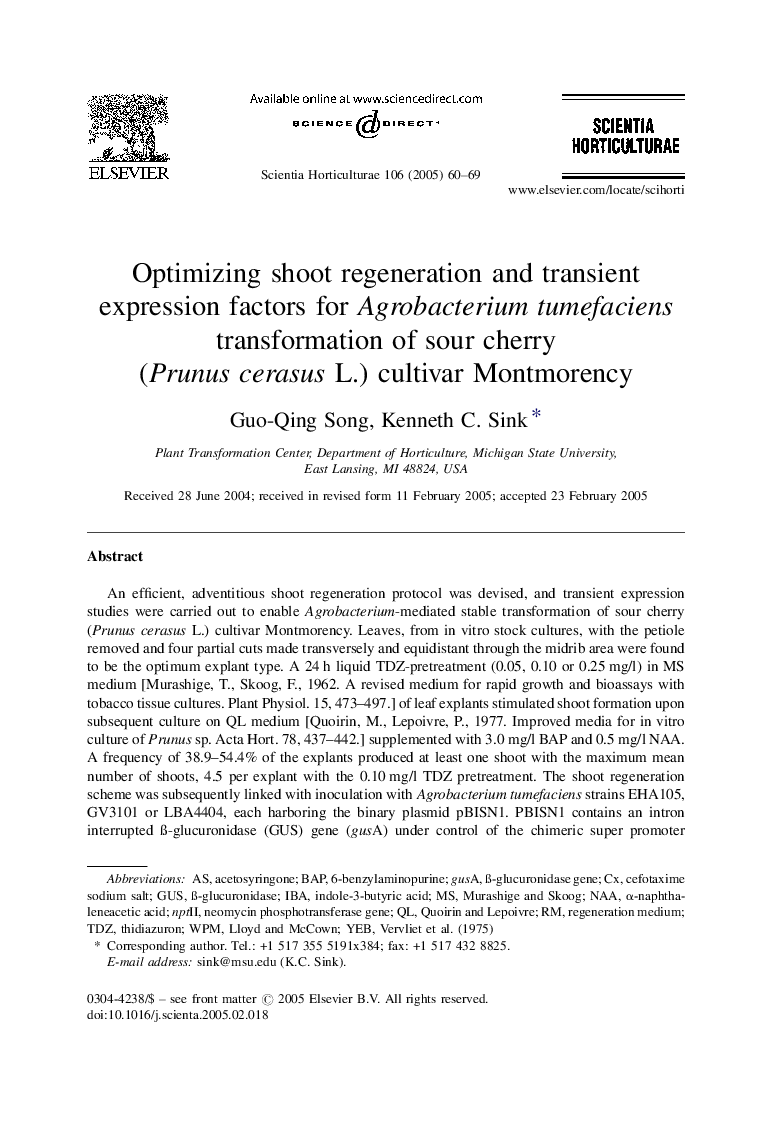| Article ID | Journal | Published Year | Pages | File Type |
|---|---|---|---|---|
| 9488817 | Scientia Horticulturae | 2005 | 10 Pages |
Abstract
An efficient, adventitious shoot regeneration protocol was devised, and transient expression studies were carried out to enable Agrobacterium-mediated stable transformation of sour cherry (Prunus cerasus L.) cultivar Montmorency. Leaves, from in vitro stock cultures, with the petiole removed and four partial cuts made transversely and equidistant through the midrib area were found to be the optimum explant type. A 24Â h liquid TDZ-pretreatment (0.05, 0.10 or 0.25Â mg/l) in MS medium [Murashige, T., Skoog, F., 1962. A revised medium for rapid growth and bioassays with tobacco tissue cultures. Plant Physiol. 15, 473-497.] of leaf explants stimulated shoot formation upon subsequent culture on QL medium [Quoirin, M., Lepoivre, P., 1977. Improved media for in vitro culture of Prunus sp. Acta Hort. 78, 437-442.] supplemented with 3.0Â mg/l BAP and 0.5Â mg/l NAA. A frequency of 38.9-54.4% of the explants produced at least one shoot with the maximum mean number of shoots, 4.5 per explant with the 0.10Â mg/l TDZ pretreatment. The shoot regeneration scheme was subsequently linked with inoculation with Agrobacterium tumefaciens strains EHA105, GV3101 or LBA4404, each harboring the binary plasmid pBISN1. PBISN1 contains an intron interrupted Ã-glucuronidase (GUS) gene (gusA) under control of the chimeric super promoter (Aocs)3AmasPmas. Blue stained leaf cells were observed after co-cultivation with all three strains. Co-cultivation for 4 days with 19.6Â mg/l acetosyringone (AS) and assay by GUS indicated over 90% of the leaf explants were infected with an average 7.5-8.8 blue foci per explant. No differences were observed in regard to A. tumefaciens strain used.
Keywords
Related Topics
Life Sciences
Agricultural and Biological Sciences
Horticulture
Authors
Guo-Qing Song, Kenneth C. Sink,
